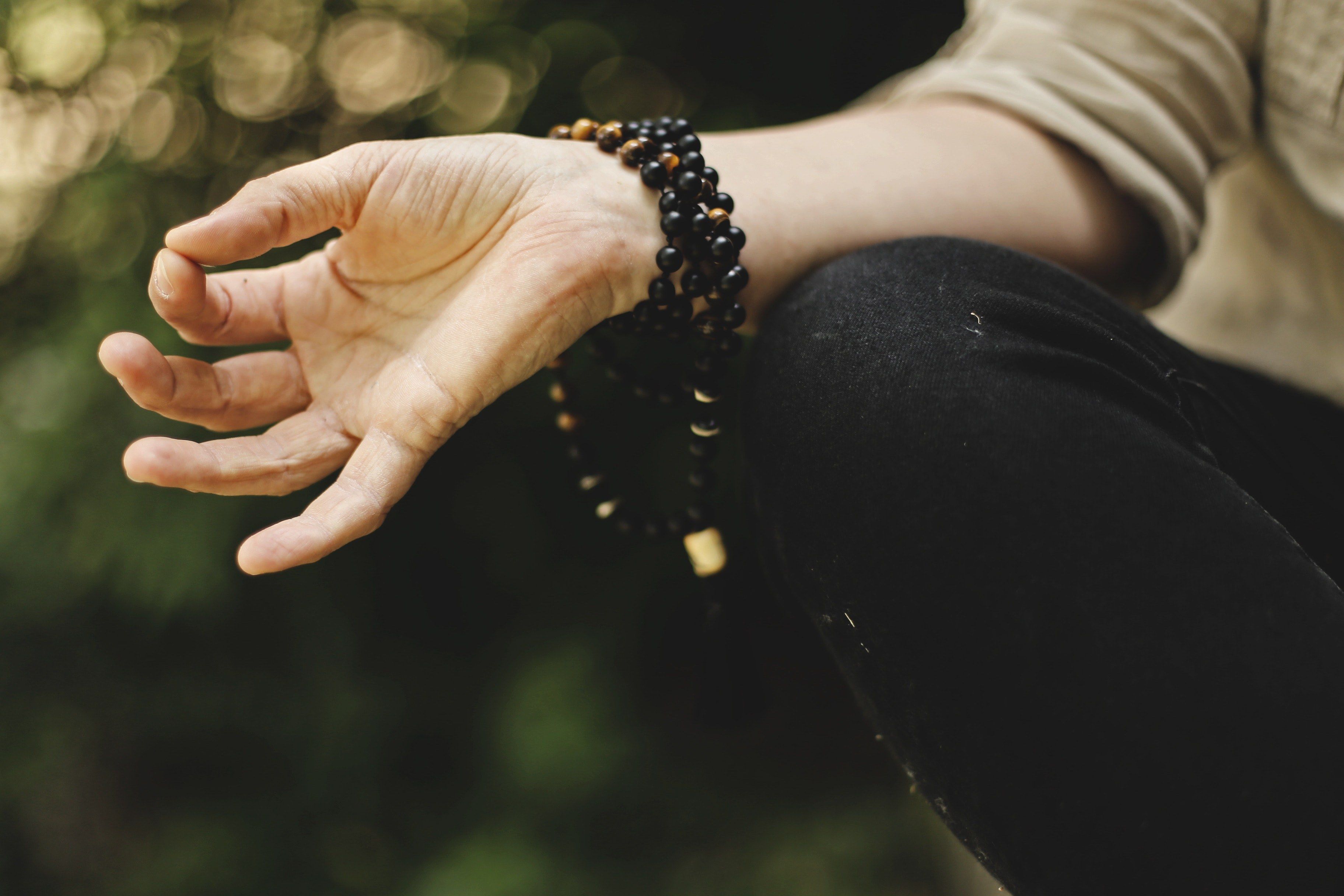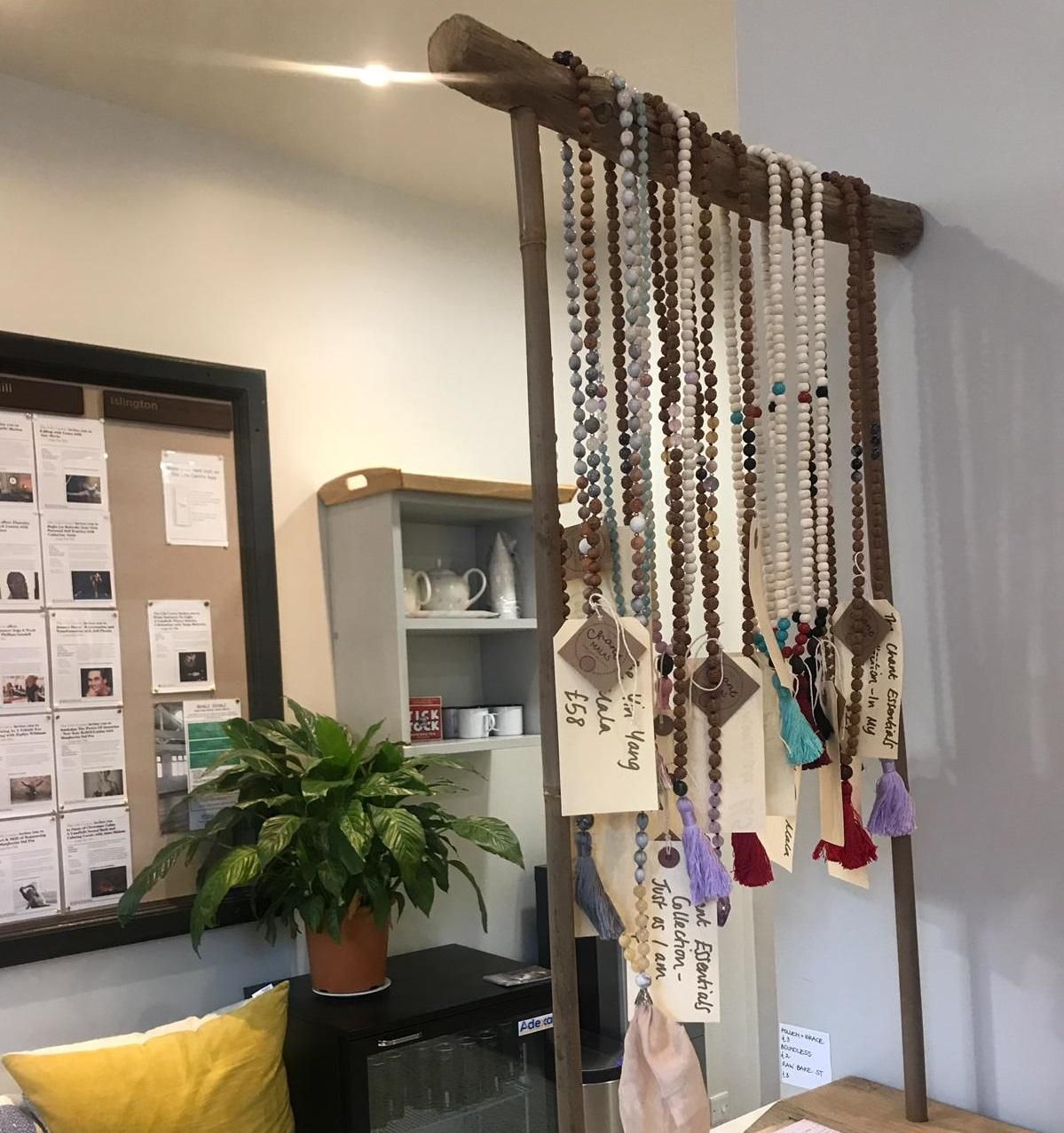Sacred Tools: How Mala Beads Work
Helen Kathleen, founder and creator of Chant Malas delves into the history and meaning of Mala beads and how they can be used during meditation.

A mala is a sacred tool that hails from India. Created by the ancient seers of India in around the 8th century BCE, mala beads were used to aid meditation practice, to help the meditator settle their mind in readiness for transcendence through the repetition of a scared mantra given to them by their guru. More than this though, the mantra that the reciter repeats is a way of accessing a particular deity, or sacred part of yourself, to aid a certain situation or area in your life that is in need of specific support.
Traditionally, malas (meaning ‘garland’ in Sanskrit) contain 108 beads (please visit this webpage for an extensive list of the reasons why 108 is such a potent and important number, and are used to help keep track of the recitation of your mantra.
The use of a mala in meditation is called Japa meditation and can be practised in three ways:
Manasika japa: Reciting your mantra silently to yourself. This is known as the most powerful way to chant.
Vaikhari japa: Reciting your mantra out loud. This is a very effective way block out any external noises or distractions to help you to internalise your mantra and its vibrations.
Upamsha japa: This is mantra recited as a whisper.
Each mantra is made up of six parts.
- drashta (an enlightened seer), the revealer of this particular mantra
- chhandas (meter), the mantra’s structure
- devata (Meditational Deity), the informing power and presiding deity of the mantra
- bija (seed), a significant sound, word, or series of words, that empowers the mantra
- shakti (energy or power), the vibration-forms generated by the sound
- kilaka (pin), the concealment of the awareness-essence of the mantra (When the ‘pin’ is removed through empowerment or constant repetition, the awareness-essence manifests.)
Each of my designs comes with a list of mantras to choose from if you do not have one. I strongly encourage you, if you are interested in this, to read up on the subject or ask your teacher to select an appropriate one for you.
When you use your mala this way, the woods, seeds and crystals will be infused with the power and vibrations behind your mantra. Whether you choose to carry your mantra with you, wear it around your neck, or simply place it on your altar, sacred space or under your pillow, my hope is that you can find stillness and space through the use of this beautiful practice.
I give thanks to my teachers for sharing their gifts.
About Chant Malas
Chant Malas are created to tell a story, whether that be the story of a Goddess, the story of the moon, the story of a journey, or the story of an individual (as with my bespoke pieces). My design process begins with an intention, which is then used to guide my choice of stones, and then allow the design to emerge from there.
I use only natural stones and/or seeds that have undergone only mechanical treatment, so no dyes and no heating. Created with integrity, all Chant Malas are sustainably- and ethically-sourced, vegan and contain no animal products or residues so that you can be confident that your beads match your values.
We have a range of Chant Malas at different price points on sale at both our Islington and Notting Hill centres.

